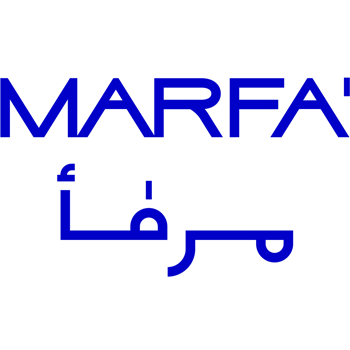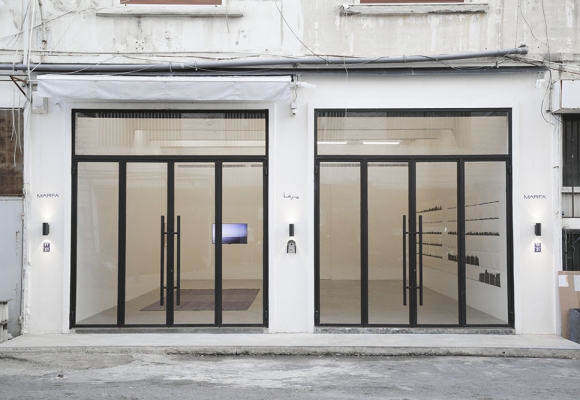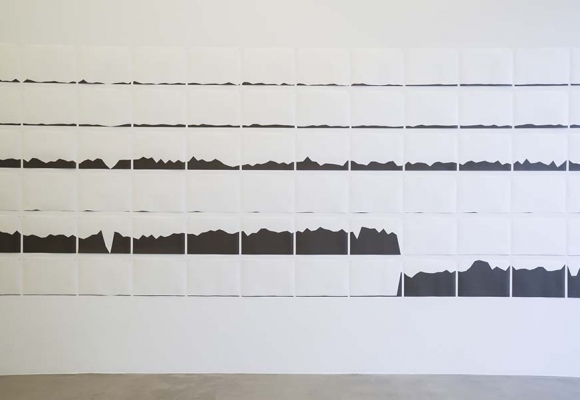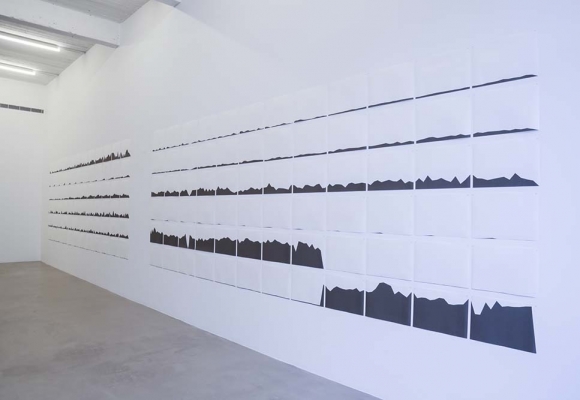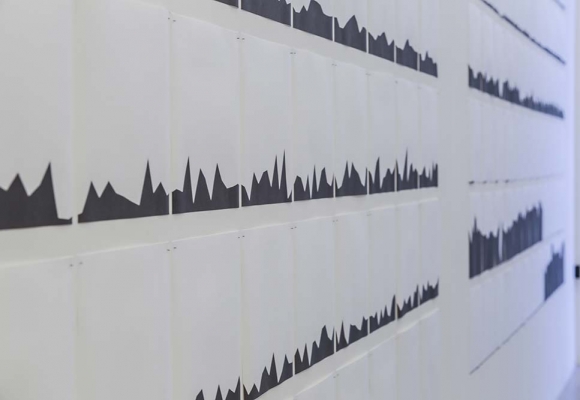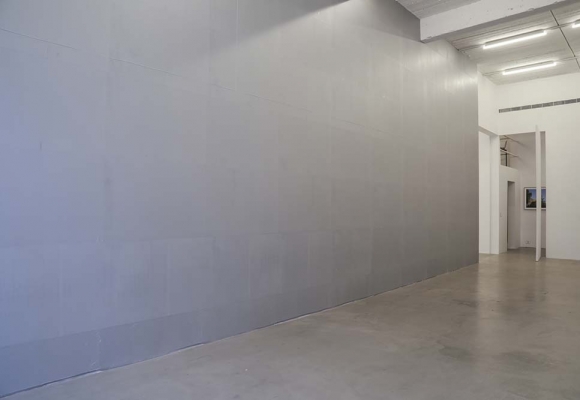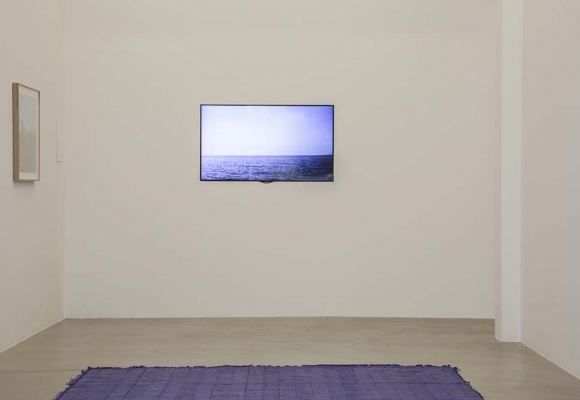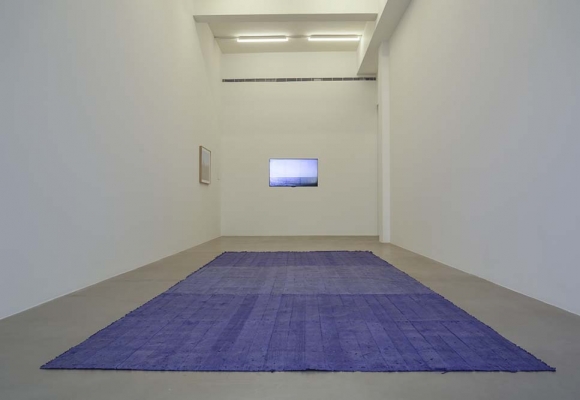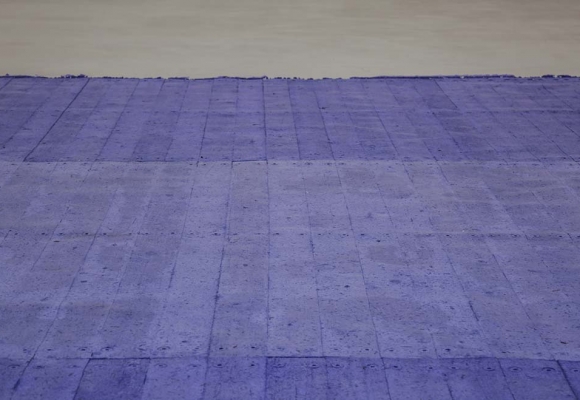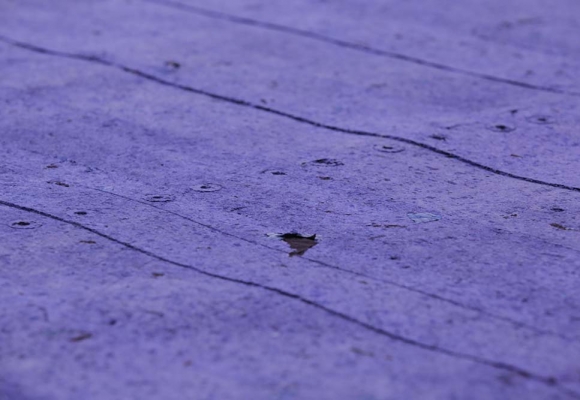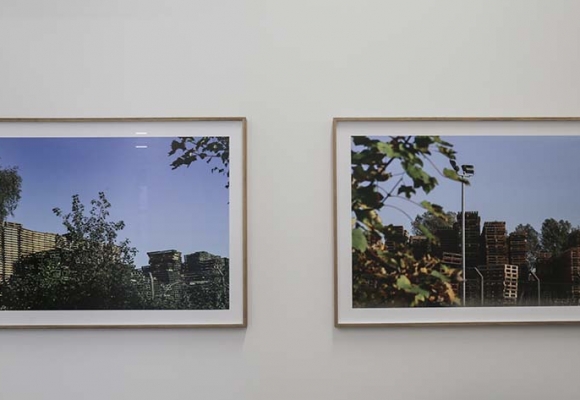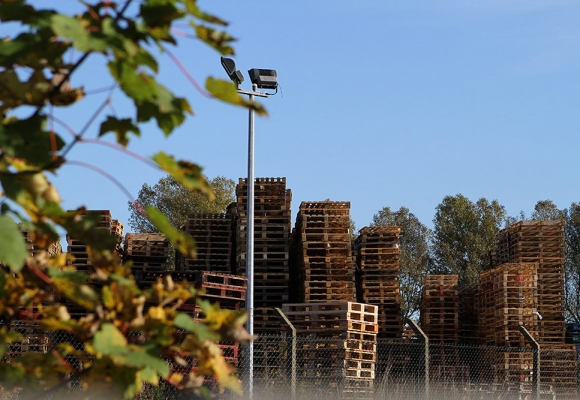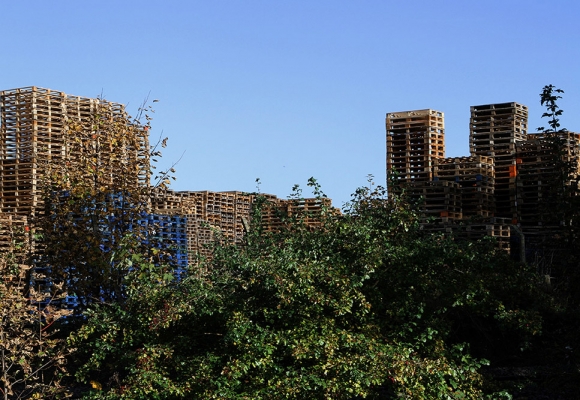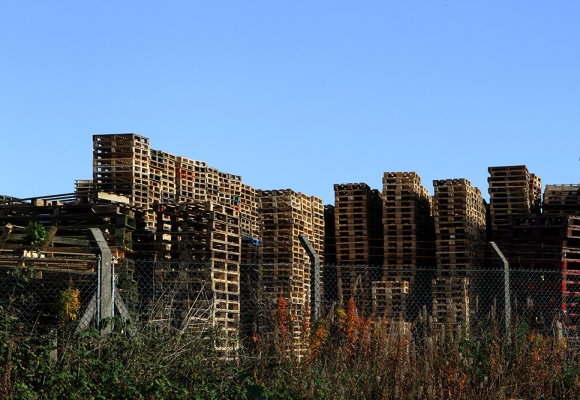Caline Aoun
Fields of Space
9 March 2016 - 14 May 2016
Caline Aoun (b 1983, Beirut) is a visual artist whose work engages issues related to urbanism, architecture, print and digital advertising space. Aoun invites the audience to consider and question a set of elements that open up to larger notions of over-consumerism, excess and saturation.
In Fields of Space, Aoun makes use of the Beirut port’s objects – shipping container floors, ledgers, industrial shipping palettes – and data to reimagine the ways in which we envision and interact with space and the materiality around us. Mundane elements that are normally overlooked become objects to gaze at. Aoun manipulates information and disrupts the common constructed reading of familiar objects, assigning new values to what otherwise would simply fade in the urban panorama.
In Datascape, the total weight per month of imported and exported goods from 2004 until 2015 is put together in the form of graphs. Data however becomes irrelevant as it makes way for dreamy abstract landscapes that occupy an entire wall. Information that bears heaviness becomes an intangible and airy topographical representation of commercial exchanges and consumption. Each A3 graph represents the weight in tons per month of a given product for a given year. Thus each horizontal series of 13 graphs illustrates the total imported and exported weight of a certain product throughout the years.
In Silver Scratch, an entire wall of the gallery is covered with silver scratch ink. The viewer is invited to scratch the surface, which will then reveal the actual wall. This impromptu scratching gesture will allow for a potential landscape, shaped by the flux of people interacting with the installation and gaining awareness of the space that surrounds them.
Seascape is a 24h live streaming video of the sea shot from a shore overlooking the comings and goings of shipping boats. The video records not only the continuous movement of traffic of goods but also the constant rhythm of waves, both disturbed by the pixilation of the image and/or Internet connection failure. Moving the outdoor scenery to the private space of the gallery, the video is inevitably reminiscent of the privatization and gentrification of Lebanese seashores.
In Shipping Container Floor, the very floor of a shipping container is cast in carbon paper pulp. Usually carrying a considerable weight, it loses its function and becomes a fragile surface.
In Palettes 2, shipping palettes are photographed from a train platform, creating a symmetry between the body of the photographer and the subject being photographed; each an object in transit, each subject to the flow of economic streams. The image speaks not so much of urban infrastructure, but of the latent physical processes of economic exchange. The porous building-like forms also bring to mind the many half-finished buildings of Beirut – relics of a building boom that was frozen by war – reminding us that a moment of flux can take on a sense of permanence only if the economic flow that powers it stalls.
